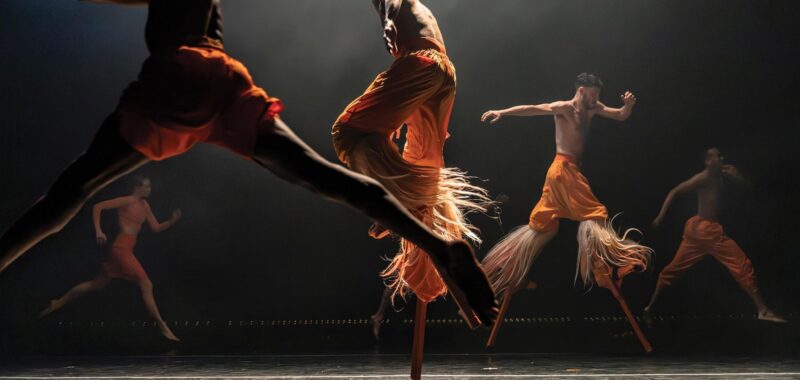NEW YORK — The eclectic annual Fall for Dance festival is a beloved tradition among dance fans, not least for its $30 tickets — still quite a deal in New York, even if they began at $10 two decades ago.
But the best thing about it is still the variety it brings to the stage, with 15 acts over 11 days this year from artists around the world. This year’s highlights have come from as far as the Kyiv Opera House in Ukraine, and as close as a few blocks away.
You could call it a veritable United Nations of dance — which is exactly how the president of New York City Center, Michael Rosenberg, described it this week, introducing the third of five programs. He didn’t explicitly refer to the ongoing U.N General Assembly happening a bit further east, wreaking its usual traffic chaos.
There was a happier chaos happening onstage, a mishmash of extremely different styles of dance. As usual, the audience seemed to love it all — especially the more out-there elements, like dancers stalking the stage on stilts in the first program, courtesy of choreographer Andrea Miller and her Brooklyn-based Gallim company.
Fall for Dance has always lured a mix of known names — some of them trying out something new – with names unknown to most of the crowd. Among the familiar faces this year so far have been much-loved ballet stars Tiler Peck of New York City Ballet and Herman Cornejo of American Ballet Theatre, both choreographing this time (with Cornejo dancing, too).
The emotional highlight, though, was the two-night appearance of the National Ballet of Ukraine, a troupe that has managed to remain operating in Kyiv despite huge hardship. In its first New York performance in decades, the company opened the festival with “Wartime Elegy,” an evocative piece by one of the world’s leading choreographers, Alexei Ratmansky.
Currently an artist in residence at New York City Ballet, Ratmansky has a deep connection to the material. Born in St. Petersburg to a Russian mother and a Ukrainian father, he grew up in Kyiv. When he premiered “Wartime Elegy” at Pacific Northwest Ballet in Seattle in 2022, he unfurled and held aloft a Ukrainian flag during curtain calls. In program notes for Fall for Dance, he joins the dancers in honoring their colleagues who have fallen in warfare.
The piece, featuring four male and four female dancers, both began and ended on somber tones. But in the middle, men who’d been dressed in black suddenly appeared in folk costumes. The moody (and gorgeous) piano and strings music by Ukrainian composer Valentin Silvestrov shifted to spirited tunes, and the men leaped into folk-style dancing with abandon.
The audience laughed along. But soon the dancers’ bodies seemed to be collapsing, as the choreography again reflected pain, not joy. The curtain closed with one woman standing in arabesque, leg raised behind her, as if to say, quite like the troupe itself, that she wasn’t going anywhere.
Peck, who has been starting to build an impressive choreographic resume as she continues to lead NYCB as one of its top ballerinas, presented one of three pieces commissioned by the festival: “Piano Songs,” a spirited solo for ABT dancer Aaron Bell, to the music of Meredith Monk. The 81-year-old composer delighted the crowd by appearing for a curtain call.
The highlight of another program was “The Specter of the Rose, by Cornejo, the Argentine dancer who recently celebrated his 25th anniversary with ABT. It was a reimagining of the short Fokine ballet about a young girl who returns from a ball in her gown and dreams of the spirit of the rose, who materializes to dance with her. Here, it was modernized, with Cornejo bare-chested and in jeans, and his partner, sprite-like ABT ballerina Skylar Brandt, in little jean shorts.
The dancing was everything you’d hope from two classical dancers at the top of their game, with Cornejo showing that the years have not diminished his high-flying leaps and turns — even in denim.
The festival continues through Sunday.

